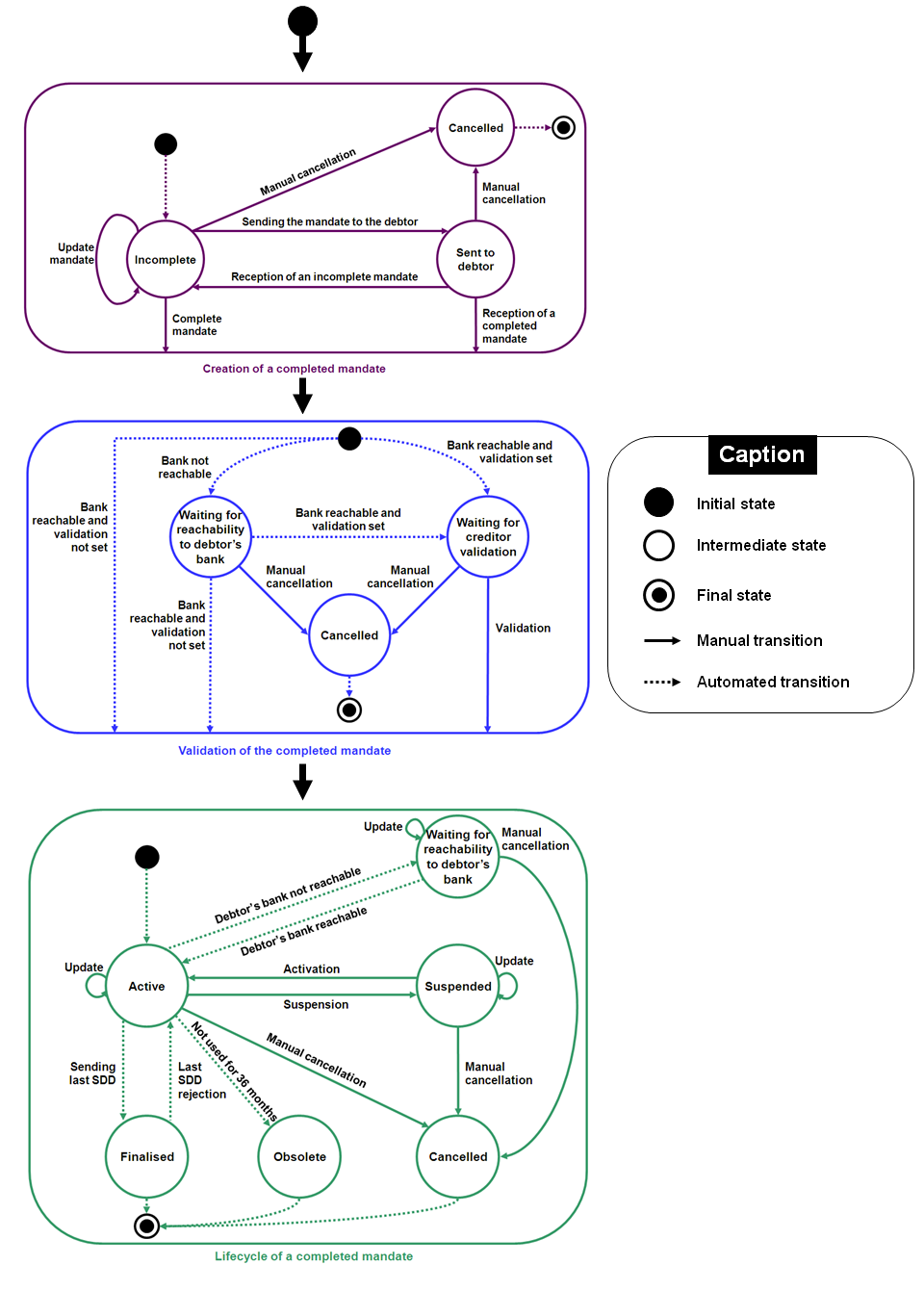SEPA Payment Suite manages all stages in the lifecycle of SEPA mandates, summarized by the following diagram:

Picture 6: Mandate lifecycle
The SEPA Payment Suite application enables users to display the status history for each mandate in the application.This information is visible in the mandate detail.
Description of the Mandate status:
-
Pending: the mandate is created with the minimal information (see Presentation of mandate data), but some information is missing in order to consider the mandate as Active send a direct debit. The mandate is considered pending until the information are not fulfilled:
-
Unique mandate reference,
-
SDD Scheme,
-
Transaction type,
-
Creditor’s name,
-
SEPA Creditor identifier,
-
Debtor’s name,
-
Debtor’s bank account,
-
Date of signature.
This information is the mandatory data to send the direct debit
-
-
Sent to debtor: The mandate has been created and sent to the debtor so that he completes and signs the mandate.
-
Waiting reachability: The mandate is complete but the debtor’s bank is not reachable for the selected scheme. Therefore no SDD can be sent from this mandate.
-
Waiting for validation: The mandate is complete and the creditor requested that a manual validation must be done for the creation channel (web service, GUI, file, upload). See Double validation of mandate. This status in only shown once but 4 status existed: “Waiting for validation”, “Waiting for revocation”, “Waiting for validation of suspension”, “Waiting for deletion”.
-
Revoked: The creditor decides to cancel it, he can revoke only mandates with status “Waiting reachability to debtor’s bank”, “Waiting for creditor validation”, “Active”, “Suspended”.
-
Deleted: As for the Revoked status, it is a cancellation of the mandate, but only for mandates with status “pending” and “Sent to debtor”.
-
Active: All the mandatory data to send the direct debit has been filled, the mandate is reachable and has been validated if necessary. When the mandate is under this status, SDDs can be sent.
-
Suspended: The creditor decides to suspend the mandate for a while. When the mandate is under this status, no SDD can be sent (See Suspension of mandates).
-
Obsolete: SEPA Payment Suite automatically cancels the mandates for which no SDD have been sent for over 36 months. The mandate becomes « Obsolete ». No more SDD can be sent from this mandate.
-
Final: The mandate is considered as “Final” when the last SDD for a “Recurrent” mandate or an SDD for a “One-off” mandate, becomes Settled with a night batch if the SDD is in status Issued or Acknowledged and the due date is past. The One-off mandate will remain Active even with a valid One-off SDD until the SDD becomes Settled. But the creationof a new SDD is blocked by GUI and rejected by Web Services and File integration.
In case of a One-off mandate with a SDD a status equals to Cancelled, Rejected, Refund (partial or not), Obsolete,Returned can create another SDD.